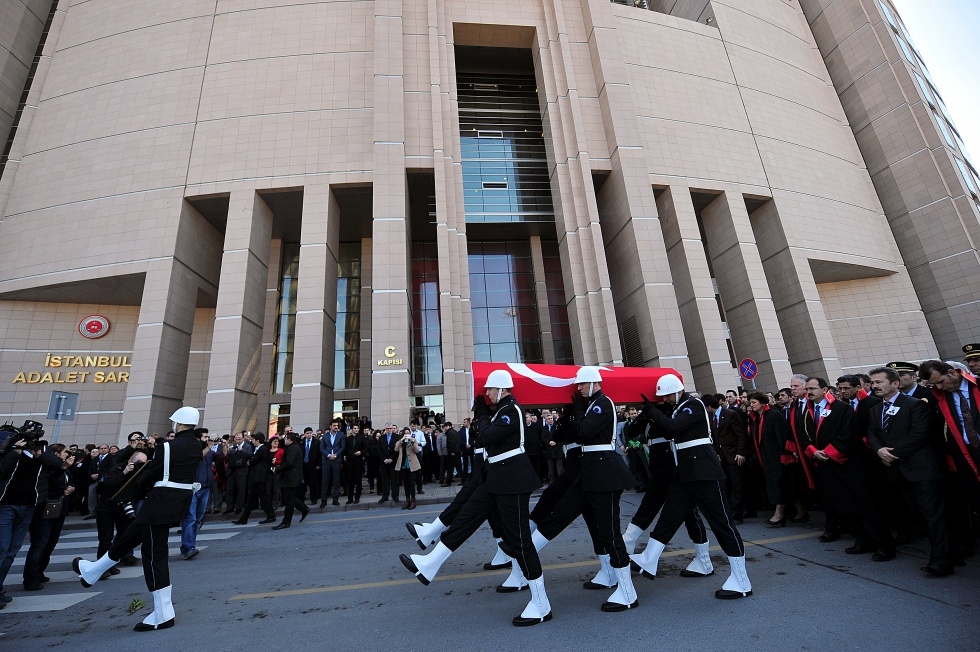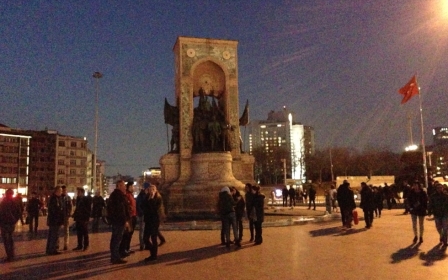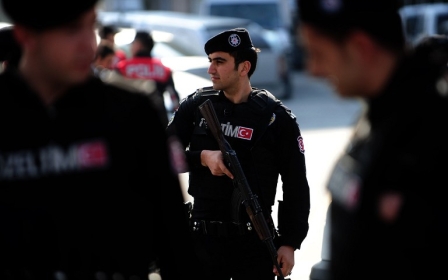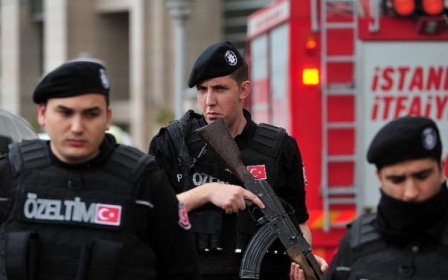Turkey’s Marxist guerrillas

In gruesome scenes in Istanbul’s central courthouse at Caglayan on Tuesday, two Marxist Leninist militants from the DHKP-C [Revolutionary Peoples Liberation Party and Front], posed for photographs amid revolutionary flags while holding a terrified prosecutor prisoner captive and gagged. The pictures were soon seen around the world.
About five hours later the two assailants and their prisoner were all dead after police staged an unsuccessful operation to liberate the prosecutor. The court-house siege was the fifth attack staged by the organisation, the DHKP-C, in under a year, and its perpetrators seem to have fully expected to die in the course of it.
The dead man, Mehmet Selim Kiraz, had been investigating the death of Berkin Elvan, a 13-year old child who died after apparently being shot with a tear gas canister by so far unidentified and unpunished policemen during the demonstrations in June 2013. No charges have ever been brought and Kiraz was the fifth prosecutor assigned to the case in less than two years.
Public indignation in Turkey runs very high over Barkin Elvan because of apparent official indifference and even attempts to denounce him as a terrorist. On twitter, pro-DHKP-C posts yesterday described the seizing of the prosecutor, as “Peoples’ justice”. But when Barkin Elvan’s father appealed to the militants not to kill their captive, saying “blood cannot wash away blood,” his words were ignored. Kiraz was simply the latest in a long line of victims over the decades. Kiraz’s funeral in Istanbul on Wednesday was attended by huge crowds, led by the legal profession and colleagues. The court-house is to be renamed after him.
Others killed by DHKP-C over the years have included generals, Ozdemir Sabanci, a key figure in Turkey’s second-largest industrial group, and foreign businessmen. In February 2013, it staged a much publicised suicide attack on the US Embassy in Ankara in which one person was killed.
The courthouse attack reminds Turks that, despite their country’s shift towards a more Islamic political system, leftwing protests and terrorism still exist in their country and in the metropolises have quite a strong following. The shoot-out in the Istanbul court-house was followed immediately by well-orchestrated protests by Marxists and even the attempted erection of barricades in lower-income suburbs of the city.
DHKP-C’s history goes back nearly 50 years to its origins as Dev-Sol, (revolutionary left) in leftist student movements in the late 1960s. It and similar groups quickly learnt to emulate revolutionary guerrilla movements in Latin America. Most of the other groups were crushed or eliminated over the years by the military, though some re-emerged at protests in the wake of the Gezi demonstrations of 2013.
In 1994, after a spate of clashes with the authorities that left its upper echelons badly decimated, Dev-Sol dropped its original name and became the DHKP-C. However, it has never operated as a conventional political party or sought legality. It is on the list of proscribed terrorist organisations in the United States, the EU and the UK - though it remains active in London.
Long after the collapse of the Soviet Union and most similar movements, the DHKP-C has been trying to fight a “peoples guerrilla war” to set up a revolutionary regime under a red flag with a red star in a circle. Tuesday’s militants and sympathizers on Twitter claimed their model was Mahir Cayan, an ultra-hardline revolutionary who died on 30 March 1972 (the anniversary is unlikely to be a coincidence) after taking hostage three British NATO technicians who died as his prisoners while under attack from the authorities.
However, since the 1960s the DHKP-C’s support base seems to have evolved. Today it is believed that most of its supporters come largely from Turkey’s 18 million-strong Alevi community, supporters of a version of Islam close but not identical to Twelver Shiism. In the 2013 Gezi protests, all eight demonstrators killed across the country were either Alevis or in a few cases Alawites (strictly speaking a different sect) from Antakya, on Turkey’s border with Syria.
In the south-eastern heartlands of Turkey’s Kurdish population, the PKK tends to recruit its following from Sunnis and the DHKP-C from Alevis. Though the two movements are competitors, Dicle, one of the two pro-Kurdish news agencies in Turkey published an article immediately after the siege ended. It gives a sympathetic account of an interview a few months ago with Şafak Yayla, a 25-year-old Istanbul law student turned DHKP-C urban guerrilla who died in the courthouse raid. It repeated claims by Yayla that he had been tortured while being held prisoner after a demonstration against charging university students fees. The report scarcely touched on the violence of the court-house attack.
Yayla’s origins as a student from a lower-income family are fairly typical of the organisation: Alevi, radical, working class, but educated and above all young. Turkish government reports estimated in 2007 that around 65 percent of its members are thought to be aged under 25 and 20 percent of them are university graduates. About a third are Lycée students and to judge from demonstrations, this percentage is probably rising. Many come from predominantly Alevi districts of Istanbul and Ankara where violent clashes between the authorities and the local authorities frequently take place, and in some cases lasted for months on end after the summer of 2013.
A second source of support comes from Turkish exile groups in Western Europe. It is there that the older leadership of the movement seems to exist underground and that funding for operations in Turkey is raised.
The appeal of the DHKP-C, and similar Marxist movements, to non-religious young lower class metropolitan Turks seems to be growing, suggesting that in the conflict between the AKP and its opponents, the political centre is losing ground to the extremes.
It is likely too that the DHKP-C, having survived many violent clashes over the decades, has a highly effective secret organisational and recruiting structure unmatched by conventional democratic political groups. Its re-emergence is further evidence of the strains besetting Turkey’s democracy.
- David Barchard has worked in Turkey as a journalist, consultant, and university teacher. He writes regularly on Turkish society, politics, and history, and is currently finishing a book on the Ottoman Empire in the 19th century.
The views expressed in this article belong to the author and do not necessarily reflect the editorial policy of Middle East Eye.
Photo: Police officers carry on 1 April, 2015 in Istanbul the coffin of senior Istanbul prosecutor Mehmet Selim Kiraz (AFP)
New MEE newsletter: Jerusalem Dispatch
Sign up to get the latest insights and analysis on Israel-Palestine, alongside Turkey Unpacked and other MEE newsletters
Middle East Eye delivers independent and unrivalled coverage and analysis of the Middle East, North Africa and beyond. To learn more about republishing this content and the associated fees, please fill out this form. More about MEE can be found here.





